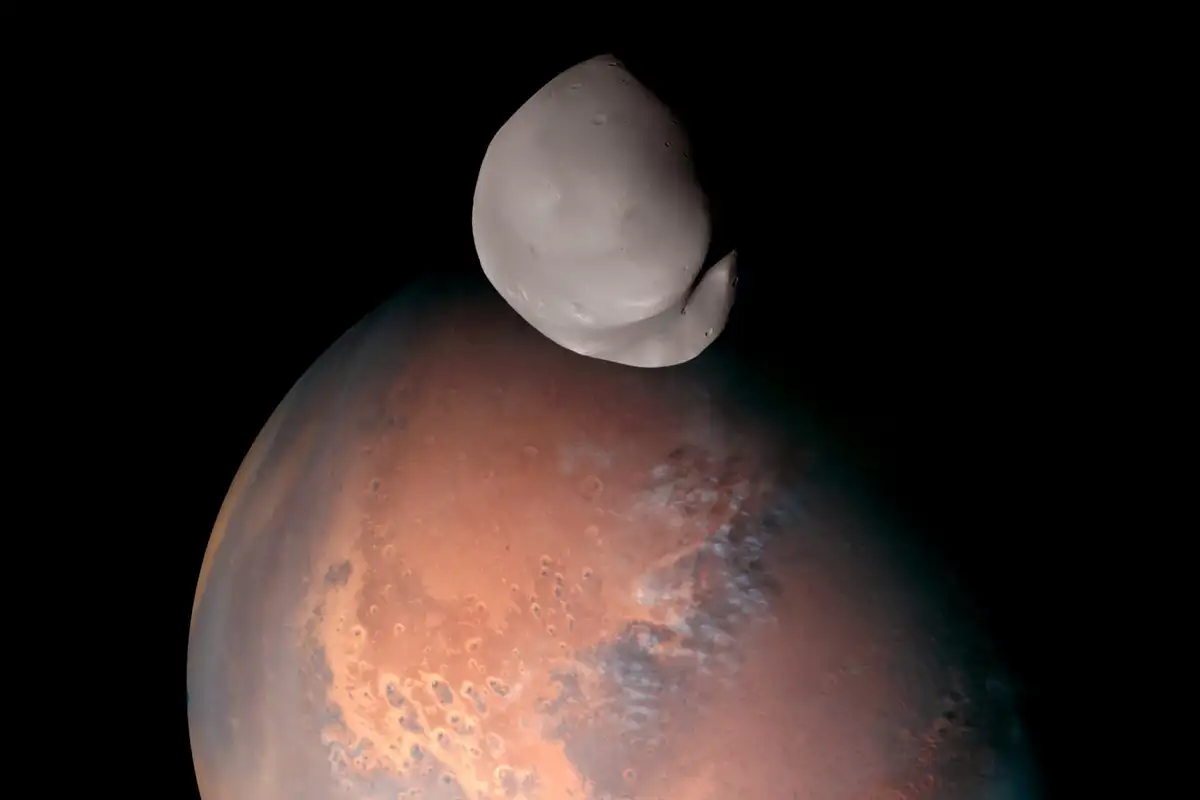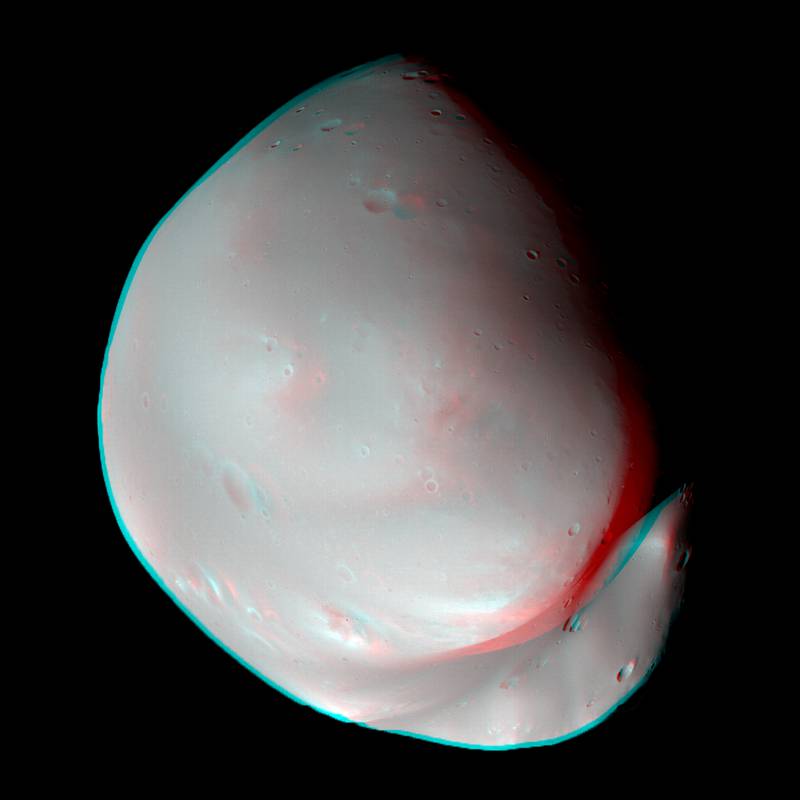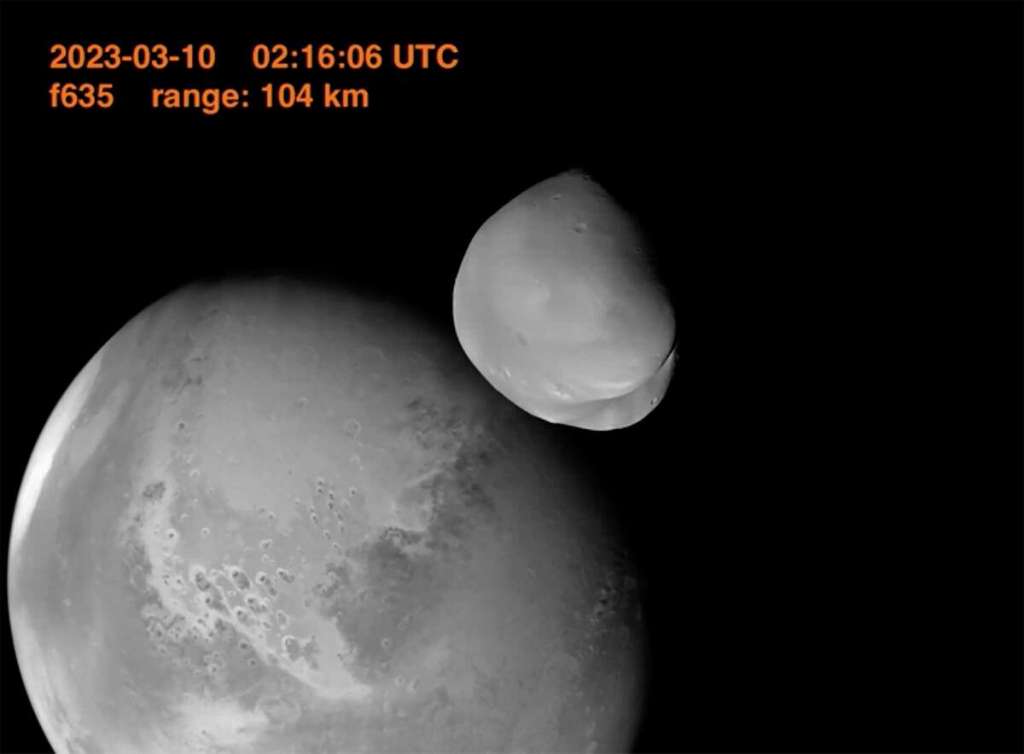
The United Arab Emirates (UAE) Hope spacecraft has gone where no probe has been before. Newly released data and images by the Emirates Mars Mission team on Monday revealed a new side of Mars’ smaller moon, Deimos, and evidence of its mysterious origin.
The Hope probe, also known as the Emirates Mars Mission, has been orbiting Mars since February 9, 2021. Its primary mission is to study the Martian atmosphere and climate, with a particular focus on understanding the planet’s weather patterns and climate changes. Occasionally, the Hope team will use the spacecraft’s high-resolution camera, called the Emirates eXploration Imager (EXI), to snap images of the planet’s moons from orbit.
In the newly released images from the Hope probe’s EXI camera, a large indented area is seen on Deimos’s far side – the part of the moon that faces away from Mars and is largely uncharted. This is joined by a few pocketed areas of craters of varying sizes.
The series of fly-bys brought the Hope orbiter as close as 100km (62 miles) to the surface.

Discovery of Deimos’s origin
It’s widely theorized that Deimos, along with its sibling moon Phobos, were likely formed as a result of a giant impact event billions of years ago. This theory, known as the “impact capture” hypothesis, suggests that both Phobos and Deimos were once asteroids that were captured by Mars’ gravity and subsequently became its moons.
Join our Discord Server: Join the community with forums and chatrooms about space! Also, directly support us via a Server Subscription!

“How exactly they came to be in their current orbits is also an active area of study, and so any new information we can gain on the two moons, especially the more rarely observed Deimos, has the potential to unlock new understanding of Mars’s satellites,” Hessa Al Matroushi, Hope’s science lead, told The National.
“Our close observations of Deimos so far point to a planetary origin rather than reflecting the composition of a type D asteroid as has been postulated.”
Several more fly-bys of the moon are planned over the course of 2024, which should continue to give us greater insight into its origin.
Follow Arin: Twitter, Instagram, LinkedIn
Related Stories:
- List of all active robots on and around Mars
- First-ever NASA asteroid sample arriving in September
- NASA rover finds strange dragon bone-looking Mars rocks
FTC: We use income earning auto affiliate links. More.




Comments